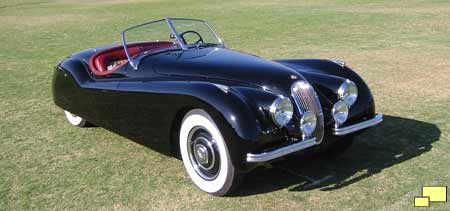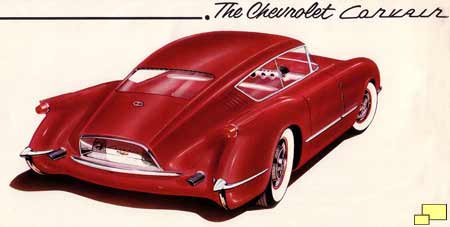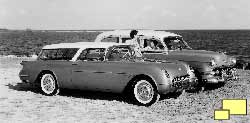Corvette Generations:
C1 C2 C3 C4 C5 C6 C7 C8
Corvette: Year by Year
1953 1954 1955 1956 1957 1958 1959 1960 1961 1962 19631964 1965 1966 1967 1968 1969 1970 1971 1972 1973 1974
1975 1976 1977 1978 1979 1980 1981 1982 1983 1984 1985
1986 1987 1988 1989 1990 1991 1992 1993 1994 1995 1996
1997 1998 1999 2000 2001 2002 2003 2004 2005 2006 2007
2008 2009 2010 2011 2012 2013 2014 2015 2016 2017 2018
2019 2020 2021 2022 2023 2024 2025
Something different began to appear on American roads: sports cars. GIs that served in Europe discovered a real affection for MGs and many other small two seaters and brought them home with them. All sorts of sports car events, from rallies to hard core races, showed a sudden burst of popularity.
The lead instigator in the birth of the Corvette was Harley Earl, the head of GM's Art and Color studio. He was a sports car aficionado, and an admirer of the Jaguar XK-120.
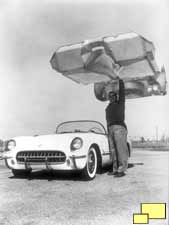 In the beginning, all Corvettes featured fiberglass bodies. The material was relatively new in 1953 when the first Corvettes appeared. It was renowned for its light weight - as per the photo to the right - and can be thought of as the carbon fiber of the 1950s. At that time only a few cars available to the public featured fiberglass bodies but the material was popular with design studios as it was a low cost method to quickly create interesting body styles.
In the beginning, all Corvettes featured fiberglass bodies. The material was relatively new in 1953 when the first Corvettes appeared. It was renowned for its light weight - as per the photo to the right - and can be thought of as the carbon fiber of the 1950s. At that time only a few cars available to the public featured fiberglass bodies but the material was popular with design studios as it was a low cost method to quickly create interesting body styles.
As the technology advanced, more modern composite materials were used and fiberglass, as used in the first Corvettes, was phased out.
Corvette started life in fiberglass form mostly out of necessity. Only 300 were made in the first production model year and fiberglass is well suited to low volume production since creating the tooling to stamp out steel panels is expensive. Labor and supply problems with steel also contributed to the decision to build a fiberglass body for the Corvette. Years later Corvette production would climb to numbers that favored steel production which was more efficient as steel bodies did not need time to cure inside of molds. Tradition, always an important factor in the Corvette story, dictated that the distinctive fiberglass body material would remain in use.
Fiberglass played another roll in the Corvette story. Certain shapes and styling themes can favor steel or fiberglass body construction; it is part of the nature of the characteristics of both materials. This explains the many distinctive styling advantages the Corvette has enjoyed over the years.
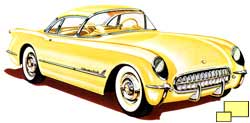
Chevrolet actually had some big ideas that involved a series of cars with a similar styling theme and fiberglass construction. Above is the Corvair and below is the Nomad. Poor sales of early Corvettes put an end to the plans. Both names would be applied to steel bodied models years later although the styling would be different.
Interesting trivia dept.: The name Corvair is actually a combination of "Corvette" and "Bel Air", another Chevrolet model.


